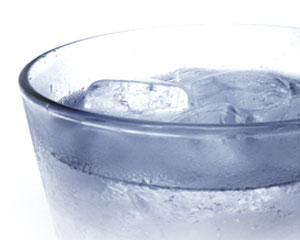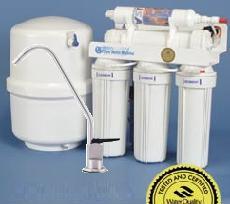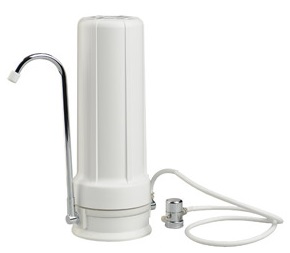On this page
- National Primary Drinking Water
Regulations
-
List of Drinking Water Contaminants & their MCLs

-
List of Drinking Water Contaminants & their MCLs
- National Secondary Drinking
Water Regulations
- List of Secondary Drinking Water Regulations
- Unregulated Contaminants
National Primary Drinking Water Regulations
National Primary Drinking Water Regulations (NPDWRs or primary standards) are legally enforceable standards that apply to public water systems. Primary standards protect public health by limiting the levels of contaminants in drinking water. Visit the list of regulated contaminants with links for more details.
- List of Contaminants & their Maximum Contaminant Level (MCLs)
- Setting Standards for Safe Drinking Water to learn about EPA's standard-setting process
- National Primary Drinking Water Regulations- The complete regulations regarding these contaminants availible from the Code of Federal Regulations Website
List of Contaminants & their MCLs
- Microorganisms
- Disinfectants
- Disinfection Byproducts
- Inorganic Chemicals
- Organic Chemicals
- Radionuclides
Microorganisms
| Contaminant |
MCLG1 (mg/L)2 |
MCL
or TT1 (mg/L)2 |
Potential Health Effects from Ingestion of Water | Sources of Contaminant in Drinking Water |
|---|---|---|---|---|
| Cryptosporidium (pdf file) |
zero
|
TT 3
|
Gastrointestinal illness (e.g., diarrhea, vomiting, cramps) | Human and fecal animal waste |
| Giardia lamblia |
zero
|
TT3
|
Gastrointestinal illness (e.g., diarrhea, vomiting, cramps) | Human and animal fecal waste |
| Heterotrophic plate count |
n/a
|
TT3
|
HPC has no health effects; it is an analytic method used to measure the variety of bacteria that are common in water. The lower the concentration of bacteria in drinking water, the better maintained the water system is. | HPC measures a range of bacteria that are naturally present in the environment |
| Legionella |
zero
|
TT3
|
Legionnaire's Disease, a type of pneumonia | Found naturally in water; multiplies in heating systems |
| Total Coliforms (including fecal coliform and E. Coli) |
zero
|
5.0%4
|
Not a health threat in itself; it is used to indicate whether other potentially harmful bacteria may be present5 | Coliforms are naturally present in the environment; as well as feces; fecal coliforms and E. coli only come from human and animal fecal waste. |
| Turbidity |
n/a
|
TT3
|
Turbidity is a measure of the cloudiness of water. It is used to indicate water quality and filtration effectiveness (e.g., whether disease-causing organisms are present). Higher turbidity levels are often associated with higher levels of disease-causing microorganisms such as viruses, parasites and some bacteria. These organisms can cause symptoms such as nausea, cramps, diarrhea, and associated headaches. | Soil runoff |
| Viruses (enteric) |
zero
|
TT3
|
Gastrointestinal illness (e.g., diarrhea, vomiting, cramps) | Human and animal fecal waste |
Disinfection Byproducts
| Contaminant |
MCLG1 (mg/L)2 |
MCL
or TT1 (mg/L)2 |
Potential Health Effects from Ingestion of Water | Sources of Contaminant in Drinking Water |
|---|---|---|---|---|
| Bromate |
zero
|
0.010
|
Increased risk of cancer | Byproduct of drinking water disinfection |
| Chlorite |
0.8
|
1.0
|
Anemia; infants & young children: nervous system effects | Byproduct of drinking water disinfection |
| Haloacetic acids (HAA5) |
n/a6
|
0.060
|
Increased risk of cancer | Byproduct of drinking water disinfection |
| Total Trihalomethanes (TTHMs) |
0.10
---------- 0.080 |
Liver, kidney or central nervous system problems; increased risk of cancer | Byproduct of drinking water disinfection |
Disinfectants
| Contaminant |
MRDLG1 (mg/L)2 |
MRDL1 (mg/L)2 |
Potential Health Effects from Ingestion of Water | Sources of Contaminant in Drinking Water |
|---|---|---|---|---|
| Chloramines (as Cl2) | MRDLG=41 |
MRDL=4.01 |
Eye/nose irritation; stomach discomfort, anemia | Water additive used to control microbes |
| Chlorine (as Cl2) | MRDLG=41 |
MRDL=4.01 |
Eye/nose irritation; stomach discomfort | Water additive used to control microbes |
| Chlorine dioxide (as ClO2) | MRDLG=0.81 |
MRDL=0.81 |
Anemia; infants & young children: nervous system effects | Water additive used to control microbes |
Inorganic Chemicals
| Contaminant |
MCLG1 (mg/L)2 |
MCL or TT1 (mg/L)2 |
Potential Health Effects from Ingestion of Water | Sources of Contaminant in Drinking Water |
|---|---|---|---|---|
| Antimony |
0.006
|
0.006
|
Increase in blood cholesterol; decrease in blood sugar | Discharge from petroleum refineries; fire retardants; ceramics; electronics; solder |
| Arsenic |
07
|
0.010
as of 01/23/06 |
Skin damage or problems with circulatory systems, and may have increased risk of getting cancer | Erosion of natural deposits; runoff from orchards, runoff from glass & electronicsproduction wastes |
| Asbestos (fiber >10 micrometers) |
7 million fibers per liter
|
7 MFL
|
Increased risk of developing benign intestinal polyps | Decay of asbestos cement in water mains; erosion of natural deposits |
| Barium |
2
|
2
|
Increase in blood pressure | Discharge of drilling wastes; discharge from metal refineries; erosion of natural deposits |
| Beryllium |
0.004
|
0.004
|
Intestinal lesions | Discharge from metal refineries and coal-burning factories; discharge from electrical, aerospace, and defense industries |
| Cadmium |
0.005
|
0.005
|
Kidney damage | Corrosion of galvanized pipes; erosion of natural deposits; discharge from metal refineries; runoff from waste batteries and paints |
| Chromium (total) |
0.1
|
0.1
|
Allergic dermatitis | Discharge from steel and pulp mills; erosion of natural deposits |
| Copper |
1.3
|
TT8;
Action Level=1.3 |
Short term exposure: Gastrointestinal distress
Long term exposure: Liver or kidney damage People with Wilson's Disease should consult their personal doctor if the amount of copper in their water exceeds the action level |
Corrosion of household plumbing systems; erosion of natural deposits |
| Cyanide (as free cyanide) |
0.2
|
0.2
|
Nerve damage or thyroid problems | Discharge from steel/metal factories; discharge from plastic and fertilizer factories |
| Fluoride |
4.0
|
4.0
|
Bone disease (pain and tenderness of the bones); Children may get mottled teeth | Water additive which promotes strong teeth; erosion of natural deposits; discharge from fertilizer and aluminum factories |
| Lead |
zero
|
TT8;
Action Level=0.015 |
Infants and children: Delays in physical or mental
development; children could show slight deficits in
attention span and learning abilities Adults: Kidney problems; high blood pressure |
Corrosion of household plumbing systems; erosion of natural deposits |
| Mercury (inorganic) |
0.002
|
0.002
|
Kidney damage | Erosion of natural deposits; discharge from refineries and factories; runoff from landfills and croplands |
| Nitrate (measured as Nitrogen) |
10
|
10
|
Infants below the age of six months who drink water containing nitrate in excess of the MCL could become seriously ill and, if untreated, may die. Symptoms include shortness of breath and blue-baby syndrome. | Runoff from fertilizer use; leaching from septic tanks, sewage; erosion of natural deposits |
| Nitrite (measured as Nitrogen) |
1
|
1
|
Infants below the age of six months who drink water containing nitrite in excess of the MCL could become seriously ill and, if untreated, may die. Symptoms include shortness of breath and blue-baby syndrome. | Runoff from fertilizer use; leaching from septic tanks, sewage; erosion of natural deposits |
| Selenium |
0.05
|
0.05
|
Hair or fingernail loss; numbness in fingers or toes; circulatory problems | Discharge from petroleum refineries; erosion of natural deposits; discharge from mines |
| Thallium |
0.0005
|
0.002
|
Hair loss; changes in blood; kidney, intestine, or liver problems | Leaching from ore-processing sites; discharge from electronics, glass, and drug factories |
Organic Chemicals
| Contaminant |
MCLG1 (mg/L)2 |
MCL
or TT1 (mg/L)2 |
Potential Health Effects
from Ingestion of Water
|
Sources of Contaminant in Drinking Water |
|---|---|---|---|---|
| Acrylamide |
zero
|
TT9
|
Nervous system or blood problems; increased risk of cancer |
Added to water during sewage/wastewater treatment |
| Alachlor |
zero
|
0.002
|
Eye, liver, kidney or spleen problems; anemia; increased risk of cancer |
Runoff from herbicide used on row crops |
| Atrazine |
0.003
|
0.003
|
Cardiovascular system or reproductive problems |
Runoff from herbicide used on row crops |
| Benzene |
zero
|
0.005
|
Anemia; decrease in blood platelets; increased risk of cancer |
Discharge from factories; leaching from gas storage tanks and landfills |
| Benzo(a)pyrene (PAHs) |
zero
|
0.0002
|
Reproductive difficulties; increased risk of cancer |
Leaching from linings of water storage tanks and distribution lines |
| Carbofuran |
0.04
|
0.04
|
Problems with blood, nervous system, or reproductive system |
Leaching of soil fumigant used on rice and alfalfa |
| Carbon tetrachloride |
zero
|
0.005
|
Liver problems; increased risk of cancer |
Discharge from chemical plants and other industrial activities |
| Chlordane |
zero
|
0.002
|
Liver or nervous system problems; increased risk of cancer |
Residue of banned termiticide |
| Chlorobenzene |
0.1
|
0.1
|
Liver or kidney problems |
Discharge from chemical and agricultural chemical factories |
| 2,4-D |
0.07
|
0.07
|
Kidney, liver, or adrenal gland problems |
Runoff from herbicide used on row crops |
| Dalapon |
0.2
|
0.2
|
Minor kidney changes |
Runoff from herbicide used on rights of way |
| 1,2-Dibromo-3-chloropropane (DBCP) |
zero
|
0.0002
|
Reproductive difficulties; increased risk of cancer |
Runoff/leaching from soil fumigant used on soybeans, cotton, pineapples, and orchards |
| o-Dichlorobenzene |
0.6
|
0.6
|
Liver, kidney, or circulatory system problems |
Discharge from industrial chemical factories |
| p-Dichlorobenzene |
0.075
|
0.075
|
Anemia; liver, kidney or spleen damage; changes in blood |
Discharge from industrial chemical factories |
| 1,2-Dichloroethane |
zero
|
0.005
|
Increased risk of cancer |
Discharge from industrial chemical factories |
| 1,1-Dichloroethylene |
0.007
|
0.007
|
Liver problems |
Discharge from industrial chemical factories |
| cis-1,2-Dichloroethylene |
0.07
|
0.07
|
Liver problems |
Discharge from industrial chemical factories |
| trans-1,2-Dichloroethylene |
0.1
|
0.1
|
Liver problems |
Discharge from industrial chemical factories |
| Dichloromethane |
zero
|
0.005
|
Liver problems; increased risk of cancer |
Discharge from drug and chemical factories |
| 1,2-Dichloropropane |
zero
|
0.005
|
Increased risk of cancer |
Discharge from industrial chemical factories |
| Di(2-ethylhexyl) adipate |
0.4
|
0.4
|
Weight loss, liver problems, or possible reproductive difficulties. |
Discharge from chemical factories |
| Di(2-ethylhexyl) phthalate |
zero
|
0.006
|
Reproductive difficulties; liver problems; increased risk of cancer |
Discharge from rubber and chemical factories |
| Dinoseb |
0.007
|
0.007
|
Reproductive difficulties |
Runoff from herbicide used on soybeans and vegetables |
| Dioxin (2,3,7,8-TCDD) |
zero
|
0.00000003
|
Reproductive difficulties; increased risk of cancer |
Emissions from waste incineration and other combustion; discharge from chemical factories |
| Diquat |
0.02
|
0.02
|
Cataracts |
Runoff from herbicide use |
| Endothall |
0.1
|
0.1
|
Stomach and intestinal problems |
Runoff from herbicide use |
| Endrin |
0.002
|
0.002
|
Liver problems |
Residue of banned insecticide |
| Epichlorohydrin |
zero
|
TT9
|
Increased cancer risk, and over a long period of time, stomach problems |
Discharge from industrial chemical factories; an impurity of some water treatment chemicals |
| Ethylbenzene |
0.7
|
0.7
|
Liver or kidneys problems |
Discharge from petroleum refineries |
| Ethylene dibromide |
zero
|
0.00005
|
Problems with liver, stomach, reproductive system, or kidneys; increased risk of cancer |
Discharge from petroleum refineries |
| Glyphosate |
0.7
|
0.7
|
Kidney problems; reproductive difficulties |
Runoff from herbicide use |
| Heptachlor |
zero
|
0.0004
|
Liver damage; increased risk of cancer |
Residue of banned termiticide |
| Heptachlor epoxide |
zero
|
0.0002
|
Liver damage; increased risk of cancer |
Breakdown of heptachlor |
| Hexachlorobenzene |
zero
|
0.001
|
Liver or kidney problems; reproductive difficulties; increased risk of cancer |
Discharge from metal refineries and agricultural chemical factories |
| Hexachlorocyclopentadiene |
0.05
|
0.05
|
Kidney or stomach problems |
Discharge from chemical factories |
| Lindane |
0.0002
|
0.0002
|
Liver or kidney problems |
Runoff/leaching from insecticide used on cattle, lumber, gardens |
| Methoxychlor |
0.04
|
0.04
|
Reproductive difficulties |
Runoff/leaching from insecticide used on fruits, vegetables, alfalfa, livestock |
| Oxamyl (Vydate) |
0.2
|
0.2
|
Slight nervous system effects |
Runoff/leaching from insecticide used on apples, potatoes, and tomatoes |
|
Polychlorinated biphenyls (PCBs) |
zero
|
0.0005
|
Skin changes; thymus gland problems; immune deficiencies; reproductive or nervous system difficulties; increased risk of cancer |
Runoff from landfills; discharge of waste chemicals |
| Pentachlorophenol |
zero
|
0.001
|
Liver or kidney problems; increased cancer risk |
Discharge from wood preserving factories |
| Picloram |
0.5
|
0.5
|
Liver problems |
Herbicide runoff |
| Simazine |
0.004
|
0.004
|
Problems with blood |
Herbicide runoff |
| Styrene |
0.1
|
0.1
|
Liver, kidney, or circulatory system problems |
Discharge from rubber and plastic factories; leaching from landfills |
| Tetrachloroethylene |
zero
|
0.005
|
Liver problems; increased risk of cancer |
Discharge from factories and dry cleaners |
| Toluene |
1
|
1
|
Nervous system, kidney, or liver problems |
Discharge from petroleum factories |
| Toxaphene |
zero
|
0.003
|
Kidney, liver, or thyroid problems; increased risk of cancer |
Runoff/leaching from insecticide used on cotton and cattle |
| 2,4,5-TP (Silvex) |
0.05
|
0.05
|
Liver problems |
Residue of banned herbicide |
| 1,2,4-Trichlorobenzene |
0.07
|
0.07
|
Changes in adrenal glands |
Discharge from textile finishing factories |
| 1,1,1-Trichloroethane |
0.20
|
0.2
|
Liver, nervous system, or circulatory problems |
Discharge from metal degreasing sites and other factories |
| 1,1,2-Trichloroethane |
0.003
|
0.005
|
Liver, kidney, or immune system problems |
Discharge from industrial chemical factories |
| Trichloroethylene |
zero
|
0.005
|
Liver problems; increased risk of cancer |
Discharge from metal degreasing sites and other factories |
| Vinyl chloride |
zero
|
0.002
|
Increased risk of cancer |
Leaching from PVC pipes; discharge from plastic factories |
| Xylenes (total) |
10
|
10
|
Nervous system damage |
Discharge from petroleum factories; discharge from chemical factories |
Radionuclides
| Contaminant |
MCLG1 (mg/L)2 |
MCL
or TT1 (mg/L)2 |
Potential Health Effects from Ingestion of Water | Sources of Contaminant in Drinking Water |
|---|---|---|---|---|
| Alpha particles |
none7
---------- zero |
15 picocuries per Liter (pCi/L)
|
Increased risk of cancer | Erosion of natural deposits of certain minerals that are radioactive and may emit a form of radiation known as alpha radiation |
| Beta particles and photon emitters |
none7
---------- zero |
4 millirems per year
|
Increased risk of cancer |
Decay of natural and man-made deposits of certain minerals that are radioactive and may emit forms of radiation known as photons and beta radiation |
| Radium 226 and Radium 228 (combined) |
none7
---------- zero |
5 pCi/L
|
Increased risk of cancer | Erosion of natural deposits |
| Uranium |
zero
|
30 ug/L
as of 12/08/03 |
Increased risk of cancer, kidney toxicity | Erosion of natural deposits |


















